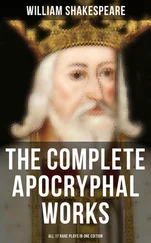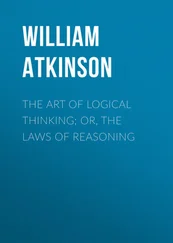In logic the word term is employed to denote any word or words which constitute a concept . The word concept is employed strictly in the sense of a subject of thought , without reference to the words symbolizing it. The concept , or subject of thought, is the important element or fact and the term denoting it is merely a convenient symbol of expression. It must be remembered that a term does not necessarily consists of but a single word, for often many words are employed to denote the concept, sometimes even an entire clause or phrase being found necessary for the current term . For the purpose of the consideration of the subjects to be treated upon in this book, we may agree that: A term is the outward symbol of a concept ; and that: The concept is the idea expressed by the term .
There are three general parts or phases of Deductive Logic, namely: Terms, Propositions and Syllogisms. Therefore, in considering Terms we are entering into a consideration of the first phase of Deductive Logic. Unless we have a correct understanding of Terms, we cannot expect to understand the succeeding stages of Deductive Reasoning. As Jevons says: "When we join terms together we make a Proposition; when we join Propositions together, we make an argument or piece of reasoning.... We should generally get nothing but nonsense if we were to put together any terms and any propositions and to suppose that we were reasoning. To produce a good argument we must be careful to obey certain rules, which it is the purpose of Logic to make known. But, in order to understand the matter perfectly, we ought first to learn exactly what a term is, and how many kinds of terms there may be ; we have next to learn the nature of a proposition and the different kinds of propositions. Afterwards we shall learn how one proposition may by reasoning be drawn from other propositions in the kind of argument called the syllogism."
Now, having seen that terms are the outward symbols or expression of concepts, and are the names of things which we join together in a proposition, let us proceed to consider the different kinds of terms, following the classifications adopted by the authorities.
A term may contain any number of nouns, substantive or adjective or it may contain but a single noun. Thus in, "Tigers are ferocious," the first term is the single substantive "tigers;" the second term is the single adjective "ferocious." And in the proposition, "The King of England is the Emperor of India," there are two terms, each composed of two nouns, "King of England" being the first term and "Emperor of India" being the second term. The proposition, "The library of the British Museum is the greatest collection of books in the world," contains fifteen words but only two terms ; the first term being "The library of the British Museum," in which are two substantives, one adjective, two definite articles and one preposition; the second term being, "the greatest collection of books in the world," which contains three substantives, one adjective, two articles, and two prepositions. The above illustration is supplied by Jevons, who adds: "A logical term, then, may consist of any number of nouns, substantive or adjective, with the articles, prepositions and conjunctions required to join them together; still it is only one term if it points out, or makes us think of a single object, or collection, or class of objects ." (A substantive, is: "the part of speech which expresses something that exists, either material or immaterial.")
The first classification of terms divides them into two general classes, viz. , (1) Singular Terms; and (2) General Terms.
A Singular Term is a term denoting a single object, person or thing. Although denoting only a single object, person or thing, it may be composed of several words; or it may be composed of but one word as in the case of a proper name, etc. The following are Singular Terms, because they are terms denoting but a single object, person or thing: "Europe; Minnesota; Socrates; Shakespeare; the first man; the highest good; the first cause; the King of England; the British Museum; the Commissioner of Public Works; the main street of the City of New York." It will be noted that in all of the examples given, the Singular Term denotes a particular something, a specific thing, a something of which there is but one, and that one possesses particularity and individuality. As Hyslop says: " Oneness of kind is not the only or distinctive feature of Singular Terms, but individuality , or singularity, as representing a concrete individual whole."
A General Term is a term which applies, in the same sense, to each and every individual object, person or thing in a number of objects, persons or things of the same kind, or to the entire class composed of such objects persons or things of the same kind. For instance, "horse; man; biped; mammal; trees; figures; grain of sand; matter," etc. Hyslop says, regarding General Terms: "In these instances the terms denote more than one object, and apply to all of the same kind. Their meaning is important in the interpretation of what are called universal propositions."
Another general classification of Terms divides them into two respective classes, as follows: (1) Collective Terms; and (2) Distributive Terms. Hyslop says of this classification: "This division is based upon the distinction between aggregate wholes of the same kind and class terms. It partly coincides with the division into Singular and General Terms, the latter always being distributive."
A Collective Term is one which denotes an aggregate or collected whole of objects, persons or things of the same or similar kind, which collective whole is considered as an individual , although composed of a totality of separate individual objects, persons or things. Thus the following terms: "regiment; congregation; army; family; crowd; nation; company; battalion; class; congress; parliament; convention;" etc. are Collective Terms, because they denote collective, aggregate or composite wholes, considered as an individual.
A Distributive Term is a term which denotes each and every individual object, person or thing in a given class . For example, are the terms: "man; quadruped; biped; mammal; book; diamond; tree." As Hyslop says: "General terms are always distributive." Also: "It is important also to keep clear the distinction between class wholes and collective wholes.... They are often confused so as to call a term denoting a class a Collective Term."
Another general classification of Terms divides them into the following two respective classes; (1) Concrete Terms; and (2) Abstract Terms.
A Concrete Term is a term denoting either a definite object, person or thing which is subject to perception and experience, and may be considered as actually existent concretely, as for instance: horse; man; mountain; dollar; knife; table; etc., or else an attribute thought of and used solely as an attribute, as for instance: "beautiful, wise, noble, virtuous, good," etc.
An Abstract Term is a term denoting the attribute, quality or property considered as apart from the object, person or thing and as having an abstract existence, as for instance: "beauty; wisdom; nobility; goodness; virtue," etc. As we have seen elsewhere, these qualities have no real existence in themselves , but are known and thought of only in connection with concrete objects, persons and things. Thus we cannot know "Beauty," but may know beautiful things ; we cannot know "Virtue," but we may know virtuous people, etc.
An attribute or quality is concrete when expressed as an adjective ; and abstract when expressed as a noun ; as for instance, "beautiful" and "beauty," respectively, or "virtuous" and "virtue," respectively. The distinction may be summed up as follows: A Concrete Term is the name of a thing or of a quality of a thing expressed as an adjective and as merely a quality ; while an Abstract Term is the name of a quality of a thing, expressed as a noun and as a "thing" in itself .
Читать дальше












